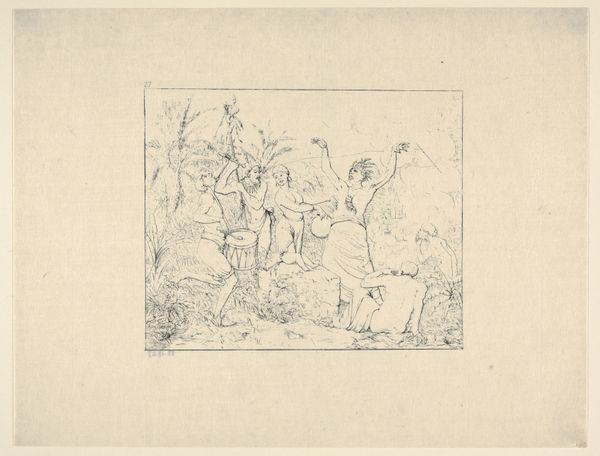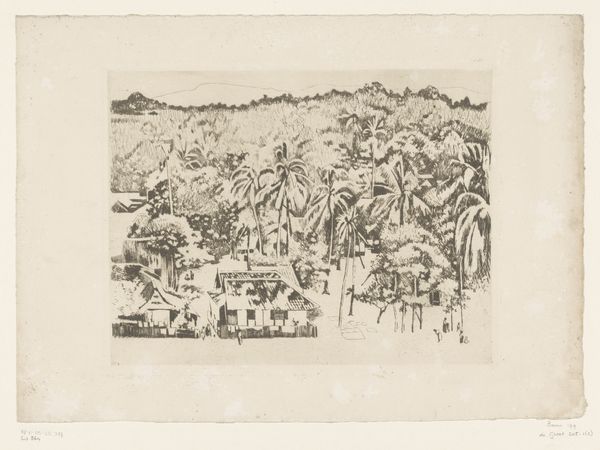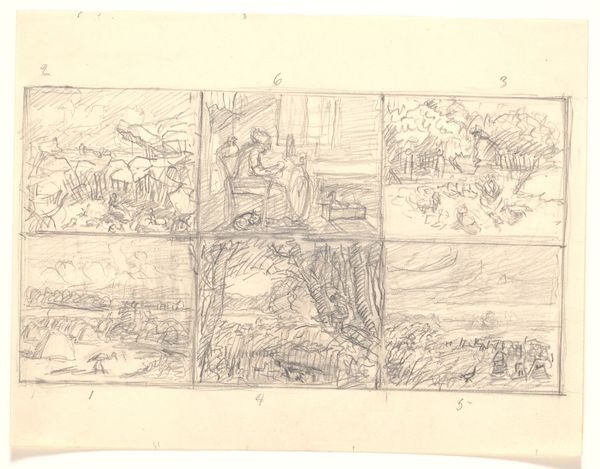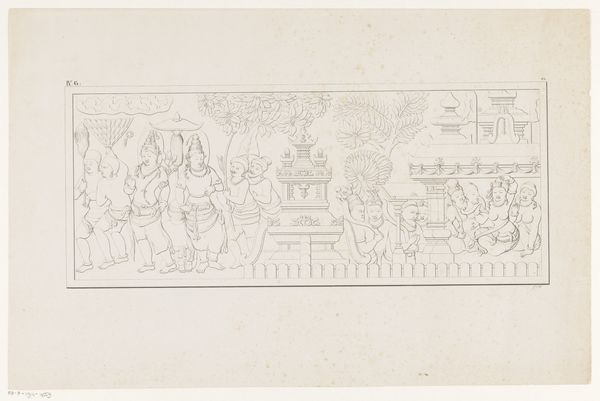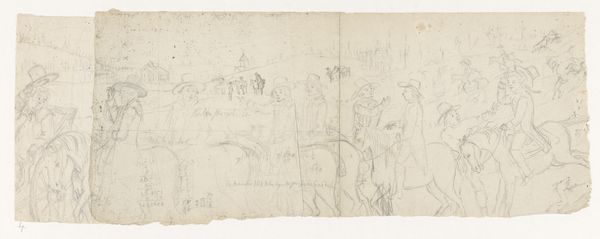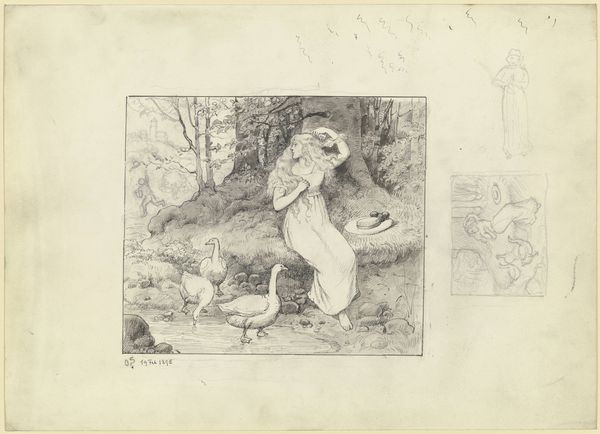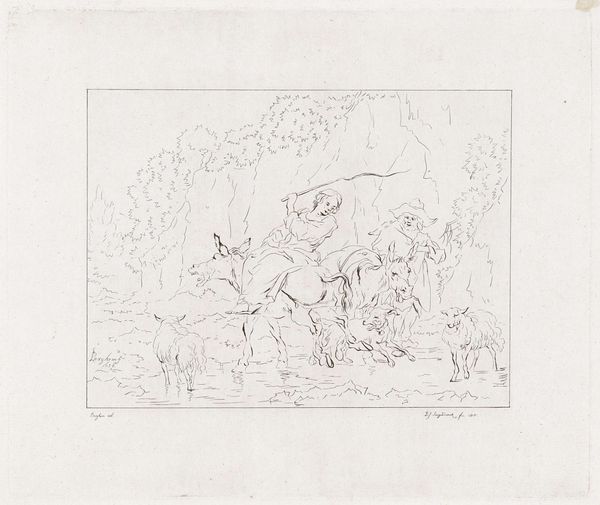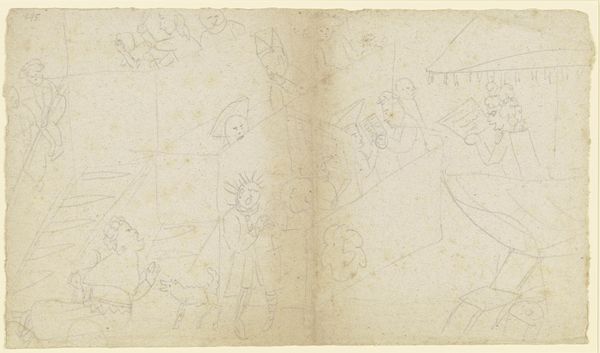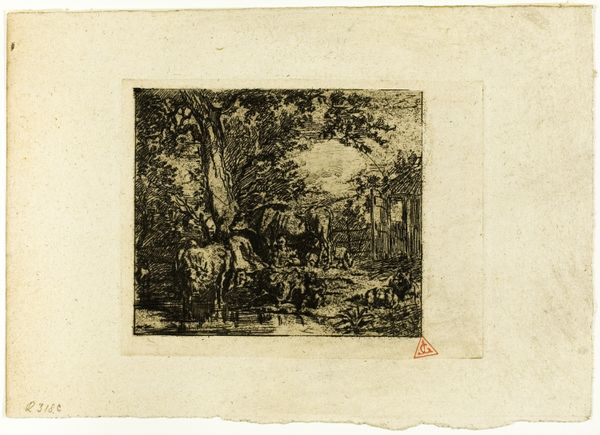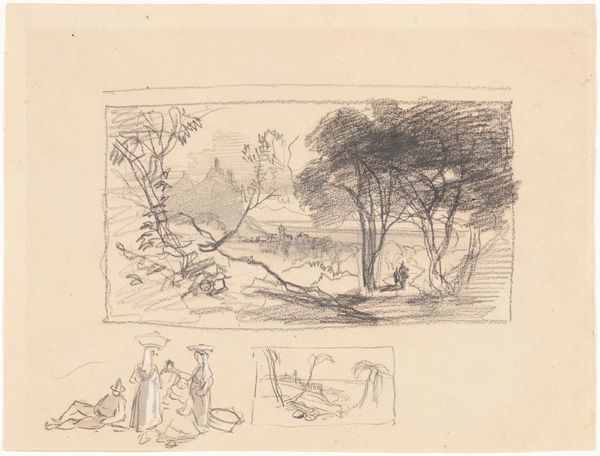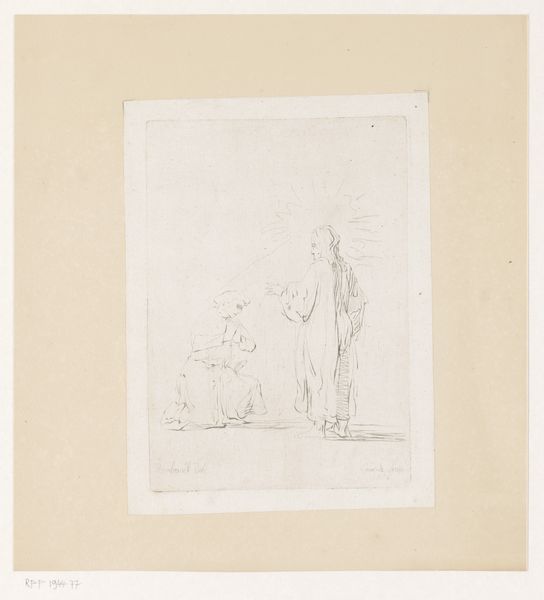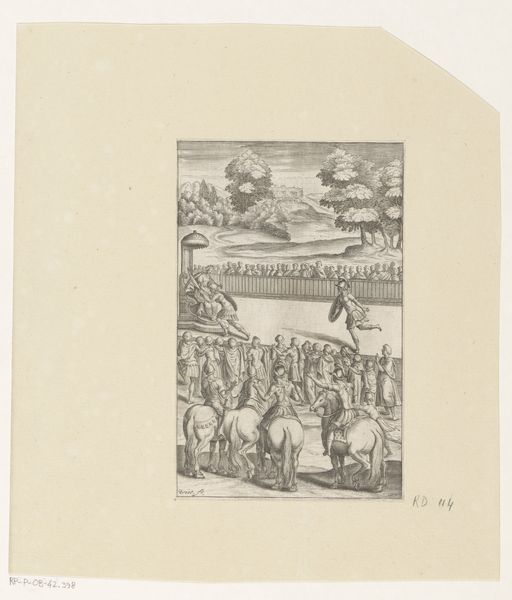
Reliëf met Boeddhistische goden, mogelijk van de tempel Candi Mendut 1836 - 1858
0:00
0:00
drawing, relief, pen
#
drawing
#
asian-art
#
relief
#
figuration
#
line
#
pen work
#
pen
#
history-painting
Dimensions: height 352 mm, width 453 mm
Copyright: Rijks Museum: Open Domain
Curator: Let's discuss this drawing entitled "Reliëf met Boeddhistische goden, mogelijk van de tempel Candi Mendut". It's thought to originate sometime between 1836 and 1858. Editor: Wow, my first thought? It’s a story unfolding, even in this pale ink. Everyone's so serene; there's this calmness despite the crowd. Curator: Absolutely. Considering its possible link to the Candi Mendut temple, what we’re seeing could well depict scenes of religious significance or historical narratives relevant to the temple’s history. The drawing itself offers insight into the cross-cultural dynamics that characterized this period. Editor: That historical detail shapes my experience of the artwork, especially in this medium. It almost feels like capturing a moment, like a memory being sketched on paper. The simple line work pulls you in. Did you ever trace things as a kid? That’s what this makes me think of. Curator: Precisely. The lines—spare and elegant—show incredible skill and focus. The artist uses line work to represent volume and texture. Furthermore, consider the composition: figures arranged methodically within the relief format. What impact might that design decision have? Editor: Methodical, but with character. The details are beautiful, yet raw somehow. Makes you wonder about the choices the artist made... the stories they chose to represent. The foliage has that illustrative feel of a fairytale illustration. Did the artist have any idea that these images would one day be in a museum? What would they think about us talking about it like this? Curator: That’s what makes these historical works of art so fascinating, isn't it? We interpret their choices through a completely different cultural and temporal lens, and so discover entirely new possibilities in those representations. I appreciate the reminder to question narratives, especially as we look at art made during periods marked by colonialism. Editor: Agreed. Thinking about that contrast really underscores the drawing’s emotional impact and its relevance in how we perceive shared histories. What was initially a peaceful scene gains these intriguing layers and I feel a connection to this forgotten artist.
Comments
No comments
Be the first to comment and join the conversation on the ultimate creative platform.
